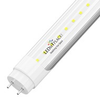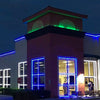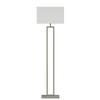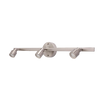Consider whether your lighting works prior to updating your furniture, replacing floors, or remodeling a living space. Lighting is a revealing sign of design quality and a way to upgrade your home without reducing your budget. It creates a mood and defines a style. Otherwise, important architectural details, artwork, and focus points will remain unnoticed and unknown. When done properly, lighting works as a carefully tuned orchestra and creates a smooth composition of light, layers, direction, and flow.
Perhaps it is time to illuminate your mind if your lighting choreography consists of a single switch.
The lighting trends change every five to ten years. If you change a few pieces in your house to reflect current things, the look of your living area will be updated.
The three major ingredients to consider when providing light make-up for your living space are light placements, devices, and tasks. Then ask yourself these questions if it's time to update them.
- Am I lighting unforeseen places?
Keep in mind that lighting works as art to define your style, set the mood, and perform practical duties when assessing the status of your illuminating style. In unexpected places, consider adding lights like the chandelier in the main bathroom. And think of unconventional lightings – such as pendant lights as reading lights.

Look for walking lines to install light fixtures on alcoves, tray ceilings, and niches. Notice the hidden lights above the cylindrical fireplace cloak in the alcove ceiling. Light painting is another way of adding surprise. The colorful luminaries of the LEDs under the Island with toe kick lights and armoires are appealing.
- Do I have layers of my lighting?
There are three fundamental layers of a perfectly lit room: overhead lighting, lighting, and accent lighting. This room brings all together — the overhead luminaries, reading lamps on the night side, the lighting on the headboard, and artwork.

Think of every light source's functional and decorative purpose. For instance, the LED Downlights are decorative in the entrance, the table lights can serve as task lighting, and the candlelight can provide overall light.
- Are my lights fading?
Good lighting should be multifaceted and mood-setting. A dimmer is a low-cost, essential instrument that monitors light quality and quantity. The dimming system can be installed either as an integrated illumination system or by adding a dimmer wall case in a room and lamps with a dimmer switch.
Compare the lighting with the radio. You don’t want only channels; you want options. Similarly, Lighting should be able to be a task of lighting and ambient lighting. Dimmers made the light multi-tasking.
- Are my fixtures updated?
One way to update the look of a living room is by replacing decorative lighting devices with new styles. The traditional lighting fan is now somewhat outdated. Consider replacing eye-catching chandeliers for your ceiling fans. For optimum illumination, maintain the overhead light at 150 to 300 watts.

Mix the lighting fittings and match them. They must not be from the same family or design of illumination. The only focus is to make the room look new and trendy.
- What is the placement of my lighting?
The lighting design is all about placing light strategically and matching its intended function with the perfect light source. Focus on indirect lighting; add texture and sightline layers. Choose focal points to highlight, and then add a light source to them. Wall sconces are great accent lighting devices to emphasize artworks and to provide light at an eye level.
So while updating your lighting, keep these 5 discussions in your mind. The results will be surprising!


















































































